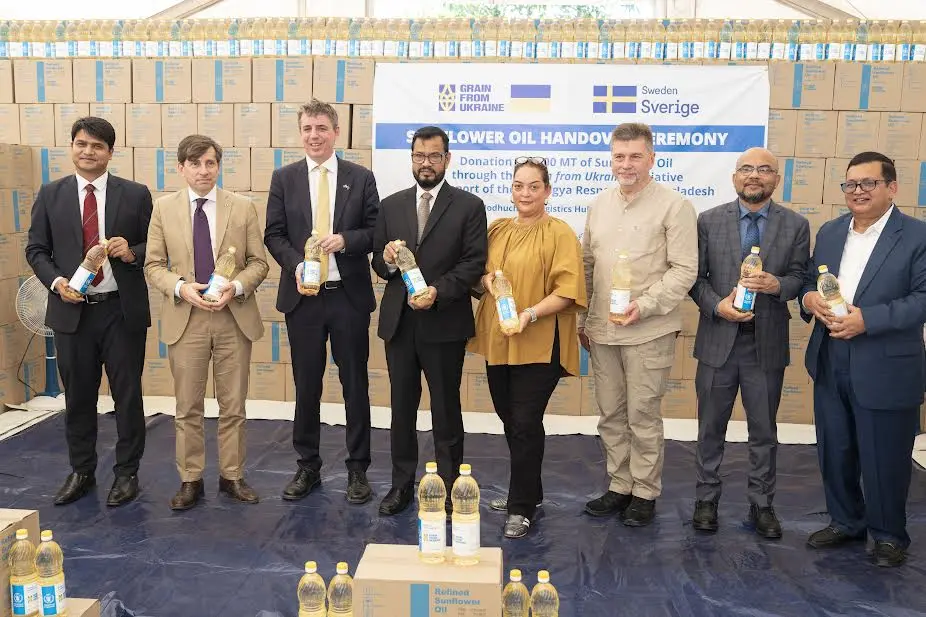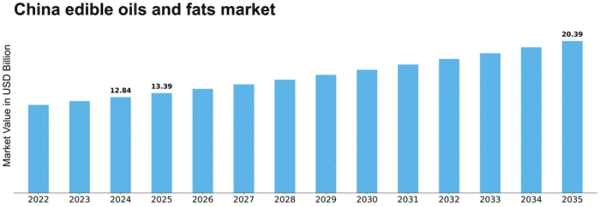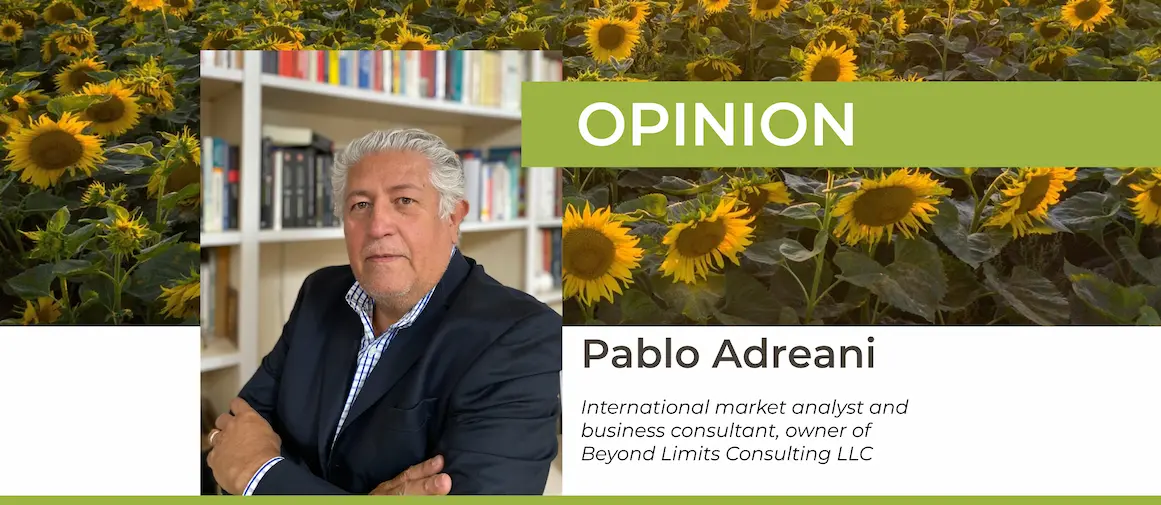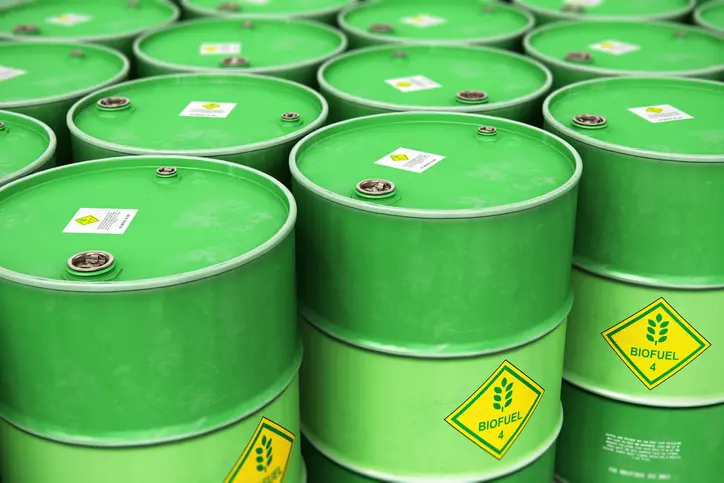DHAKA, Dec 05, 2025 (BSS) - The Government of Bangladesh, Embassy of Ukraine, Embassy of Sweden, and United Nations World Food Programme (WFP) have jointly marked the handover of 3,000 metric tonnes of sunflower oil for Rohingya refugees under the Grain from Ukraine initiative.
This contribution will support the Rohingya response led by the government with the support of WFP and other humanitarian partners, said a WFP release here today.
The Grain from Ukraine (GfU) initiative is a humanitarian food programme launched by the Government of Ukraine in 2022, with the goal of making Ukrainian food commodities available for WFP's crisis responses with international support.
The sunflower oil for the Rohingya was produced in Ukraine, with procurement and transportation costs - amounting to USD 7 million - covered by the Government of Sweden.
The ceremony took place at WFP's Modhurchara Logistics Hub in Ukhiya upazila, Cox's Bazar, on December 3 and was attended by Md Mostafizur Rahman, Secretary of the Ministry of Disaster Management, Mohammed Mizanur Rahman, Refugee Relief and Repatriation Commissioner, AKM Mohiuddin Kayes, Director, South Asia Wing, Ministry of Foreign Affairs, Dr Oleksandr Polishchuk, Ambassador of Ukraine, Nicolas Weeks, Ambassador of Sweden and Simone Parchment, WFP Bangladesh Country Director, ad interim; along with Jean-Marc Sere-Charlet, Ambassador of France, whose government also funds the Initiative.


The China edible oils and fats market, valued at $12.84 billion in 2024, is on a steady growth path, projected to rise from $13.39 billion in 2025 to $20.39 billion by 2035, reflecting a 4.29% CAGR and responding to the nation's changing culinary and health landscape.
Market Research Future Analysis: China Edible Oils and Fats Market to Exceed $20 Billion by 2035, Driven by Evolving Diets and a Steady 4.29% CAGR
In the vast and dynamic landscape of China's food industry, few sectors are as fundamental yet rapidly transforming as edible oils and fats. As a cornerstone of Chinese cuisine and food manufacturing, this market is undergoing a significant metamorphosis, propelled by rising incomes, urbanization, and a profound shift in consumer health consciousness. According to a comprehensive analysis, the China Edible Oils And Fats Market size was estimated at a substantial $12.84 billion in 2024, establishing a solid foundation for a decade of stable expansion. The industry is projected to grow from $13.39 billion in 2025 to $20.39 billion by 2035, exhibiting a steady compound annual growth rate of 4.29% during the forecast period from 2025 to 2035. This consistent growth trajectory underscores the market's essential nature while highlighting a pivotal transition from quantity to quality, from traditional staples to diversified, health-oriented products. The journey ahead for China's edible oils sector is one of premiumization, innovation, and strategic adaptation to the world's most populous nation's evolving palate.
New York , US - {5 December 2025} -The global Farming-as-a-Service (FaaS) Market is witnessing a significant surge in demand as the agriculture sector rapidly adopts advanced technologies to enhance farm productivity, reduce operational costs, and enable data-driven decision-making. With rising global food demand, increasing labor shortages, and the urgent need to improve farming efficiency, FaaS has emerged as a transformative service model reshaping the future of agriculture. The market is projected to record substantial growth over the forecast period driven by smart farming technologies, digital advisory services, drone-based crop monitoring, and shared farm mechanization platforms.
FaaS offers farmers access to essential services such as equipment rentals, precision farming advisory, training, financial services, and supply-chain support on a pay-per-use or subscription basis. This approach allows farmers-especially small and marginal ones-to adopt modern agricultural tools without the burden of large capital investments. The growing acceptance of service-based farming models is positioning FaaS as a crucial driver of sustainable and scalable agricultural operations worldwide.
Key Market Drivers
One of the primary drivers of market expansion is the rising adoption of precision farming technologies, including IoT sensors, satellite imagery, and data analytics that enable real-time monitoring of soil health, irrigation, pest management, and crop yields. Farmers are increasingly leveraging digital advisory platforms and mobile applications to make informed decisions, optimize resource utilization, and increase profitability.
The shortage of skilled labor and increasing labor costs are also encouraging farmers to transition toward automation and farm mechanization services such as drone spraying, autonomous tractors, and harvesting solutions. FaaS makes these technologies more accessible and cost-effective through shared usage and rental models.
Moreover...


Due to the war in Ukraine, supplies of Ukrainian sunflower oil to the global market have become somewhat more complicated, and it is becoming increasingly difficult to maintain the role of the world leader in this segment. Of course, in turbulent market conditions, competing suppliers are trying to increase their supply volumes to compensate for the limited shipments from Ukraine. One of these suppliers is Argentina, which is showing positive dynamics in sunflower production and processing, as well as in sunflower oil exports.
APK-Inform spoke with Pablo Adreani - an analyst and owner of the Argentine consulting company Beyond Limits Consulting LLC - about Argentina’s prospects in the global sunflower and sunflower oil market.
- Mr. Adreani, could you please tell, what trends have developed in sunflower seed production in Argentina and what share it holds compared to other crops?
- Argentina’s total production in the 2024/25 season amounts to 136 million tons, including grains, oilseeds, and other crops. Corn production is 55 million tons (40.4% of the total), soybean production is 50 million tons (36.8% of the total), and sunflower production is 5 million tons, which is 3.7% of total production. In total, corn and soybeans account for 77.2% of all production in Argentina.
Over the past five years, the area sown with sunflower in Argentina has increased by 934.000 hectares (+57%). Accordingly, production has grown by 2 million tons (+63%), which has allowed for an increase in processing volume by 1.7 million tons (+55%).
UAE-based MENA Biofuels announced progress in developing the country’s first commercial sustainable aviation fuel (SAF) plant with the signing of an offtake agreement with Emirates Petroleum Company PJSC (Emarat) on 4 November.
UAE-based MENA Biofuels announced progress in developing the country’s first commercial sustainable aviation fuel (SAF) plant with the signing of an offtake agreement with Emirates Petroleum Company PJSC (Emarat) on 4 November.
The firm said in a press release the same day that the US$300M project in the Fujairah Oil Industry Zone (FOIZ) was scheduled to be built in two phases and would convert used cooking oil (UCO) and other waste-based feedstocks into certified SAF, producing 125M litres/year.
Phase I investment would deliver 125M litres/year (around 18% of the UAE’s 2030 SAF target), with Phase II set to double capacity to 250M litres/year, contributing up to 36% of the nation’s SAF goal.
MENA Biofuels said it had launched the first of two Engineering, Procurement, Construction and Commissioning (EPCC) tenders for the SAF facility. The first EPCC package would cover the receiving, storage, and distribution facilities for feedstock, SAF, and by-products. Within first quarter 2026, MENA said it would issue the second EPCC tender, covering the SAF refinery process units and associated infrastructure.
The Emarat offtake deal would enable domestic SAF offtake and distribution across the UAE and Gulf Cooperation Council (GCC) aviation market, it added.
Mena Biofuels is a subsidiary of commodities trading and infrastructure company Mercantile & Maritime Group (MM Group), which is active in trading, logistics, infrastructure and sustainable fuels.
Emirates Petroleum Company PJSC (Emarat) is one of the UAE's leading energy providers.


The global rapeseed planted area is expected to total 44.1M ha in 2026/27, a modest increase of 0.2M ha on the previous season, according to International Grains Council (IGC) estimates reported by Germany’s Union for the Promotion of Plants and Protein (UFOP).
While a slight reduction in rapeseed planted area was expected in major exporting countries, a moderate area expansion was projected in other regions – particularly Asia, the 26 November report said.
In the EU-27, the rapeseed area was forecast to remain unchanged at 6.1M ha.
However, in the southeastern EU region, particularly in Romania, the strong 2025 harvest could encourage farmers to expand rapeseed plantings, the report said.
Meanwhile, other member states were expected to reduce their planted areas slightly.
In Russia, the rapeseed planted area was forecast to remain stable at 3M ha, following significant expansion in the current season.
According to research by Agrarmarkt Informations-Gesellschaft, Ukraine’s rapeseed planted area is expected to decline by 100,000ha to 1.3M ha.
Despite this, the total area in the Commonwealth of Independent States (CIS) was expected to reach the second largest level on record, underscoring the growing importance of rapeseed as a crop, the report said.
Forecasts for leading exporters Canada and Australia remained uncertain, as planting had not started at the time of the report.
Driven by expectations of strong international demand, Canada’s rapeseed area was projected to remain close to its previous average at 8.7M ha while Australia’s planted area was expected to remain unchanged from the previous year, at 3.4M ha.
The Department of Food and Public Distribution, under the Ministry of Consumer Affairs, Food & Public Distribution, has amended the Vegetable Oil Products, Production and Availability (Regulation) Order, 2011 (VOPPA Order) or better known as VOPPA Order 2025, to prevent enhance food safety.
India is the largest consumer and importer of edible oils, which consist of palm, mustard, soybean, sunflower, rice bran, groundnut, and coconut, among others. While palm oil is mostly imported from Indonesia and Malaysia, soybeans are imported from Argentina and Brazil. Sunflower oil is imported from Ukraine and Russia. Mustard, groundnut, sesame, and other seeds are mostly grown in India.
According to a report in PIB titled ‘Pathways and Strategies for Accelerating Growth in Edible Oils Towards the Goal of Atmanirbharta,’ over the past decades, per capita consumption of edible oil in the country has seen a dramatic rise, reaching 19.7 kg/year. This surge in demand has significantly outpaced domestic production, leading to a heavy reliance on imports to meet both domestic and industrial needs.
Any fluctuation in its price directly impacts household budgets, particularly those of the poor and middle class.
Amidst all the talks to enhance production, a rising demand, there has been reports of edible oil adulteration and blending in India. A significant and ongoing concern that poses serious health risks and economic fraud issues.
Reports on the Food Safety and Drug Administration conducting raids at Gayatri Oil Industry in Fazalgang near Kanpur, seizing approximately 35,727 litres of edible oil worth Rs 53 lakhs due to suspicious samples, is nothing new.


Europe’s energy giants are seeking to harness the potential of agricultural residues to increase the use of biofuel
As Europe races to decarbonise transport, biofuels are taking on renewed strategic importance. The European Commission has just published a bioeconomy strategy which recommends increasing the use of advanced biofuels for heavy transport. Europe’s energy companies are busy looking at ways to do that, and they have one major element in their sights – agri-feedstocks.
Biofuels derived from agricultural residues and non-food crops are emerging as a critical pillar of Europe’s clean-energy strategy. They are able to provide immediate emissions reductions in sectors where alternatives remain costly or technically challenging. They’re also compatible with existing transport infrastructure, particularly for Sustainable Aviation Fuels (SAF) and marine fuels.
The International Energy Agency expects a surge in demand for these fuels: by 2030, advanced biofuels from waste, residues, and non-food crops could represent more than 40% of global consumption, up from just 9% in 2021.
But biofuels also come with challenges and controversy. The EU backtracked on its original subtarget for biofuels in transport as part of the Renewable Energy Directive (RED) because it was found that the incentives to use ‘first-generation’ biofuels such as palm oil were driving indirect land use change (ILUC), diverting food crops to fuel and contributing to deforestation. Now, the use of first-generation biofuels counted toward the subtarget is capped.